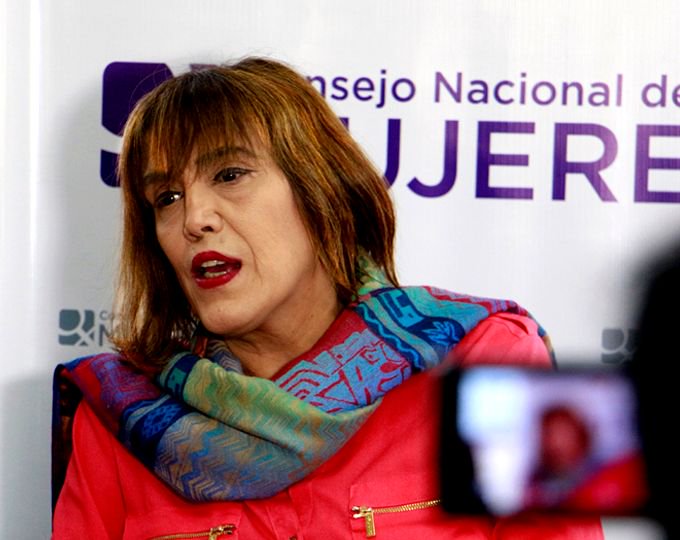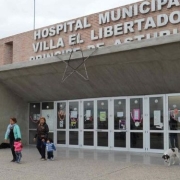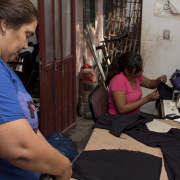National Women’s Council and INAM: what could have been, what was and how will it continue?
27 years have passed since the creation of the National Women’s Council, which since 2017 works under the name of the National Women’s Institute (INAM). He was born on August 7, 1992 with the objective of specifying the commitment assumed in the Convention on the Elimination of all forms of Discrimination against Women (CEDAW).
“Below, we offer a google translate version of the original article in Spanish. This translation may not be accurate but serves as a general presentation of the article. For more accurate information, please switch to the Spanish version of the website. In addition, feel free to directly contact in English the person mentioned at the bottom of this article with regards to this topic”.
In the election year we are in and a few days after the PASS, it is a good opportunity to ask how effective this organization has been in recent years and what challenges the next administration will have in terms of public gender policies.
The proposal of the National Women’s Council, the first hierarchical organization in the country and second in the region (that of Brazil was a pioneer and taken as a model), was designed by a group of militant women and feminist intellectuals, among them the sociologist Virginia Fraganillo who was its first president. With a headline chosen by the women’s movement itself, the outlook for the nascent body seemed promising given its authorities’ commitment to the feminist cause.
Under Fraganillo’s management, the Council had its first four years of life marked by very positive advances such as the inclusion of the gender issue in the school curriculum and sexual and reproductive health policies. We can highlight among its actions, the first abortion survey, which, in the framework of the constitutional convention of 94, opened the debate socially. However, and despite his remarkable mandate, Fraganillo resigned from office.
Since then, the following governments have weakened the institutionality of the Council, which at first depended directly on the executive branch, and their presidents showed serious limitations in terms of the effective action for women’s rights. Unknown personalities in the feminist movement such as Lucila “Pimpi” Colombo, Lidia Mondelo or Mariana Gras Buscetto, among others, went through this position.
Upon assuming the current government, Fabiana Tuñez was appointed as the head of the brand new Council. At first, for an important part of feminism, it seemed good news given Tuñez’s militant trajectory in the cause of women as the founder of the NGO “La Casa del Encuentro” and its public definition as a feminist. However, after these four years, the balance is not entirely positive.

In the middle of its management, in 2017, the Council underwent a transformation: By presidential decree it became the National Women’s Institute (INAM) and acquired the rank of secretariat under the orbit of the Ministry of Social Development.
These mutations could not cover up a problem that has remained since then, and is that of a budgetary nature. The reduced funds currently received by INAM and gender programs are alien to the inflationary expectation, so that, day after day, the actual budget designated to combat gender violence and promote women’s empowerment and equality is seen significantly reduced.
Specifically, the budget allocated to INAM for 2019 was $ 234,394,881 ($ 11.36 per woman!). But also, and according to a study by the Latin American Justice and Gender Team (ELA) “although this represents an 11% increase in nominal terms, taking into account the average inflation used by the Executive Branch itself in the preparation of the budget ( 34.8%), this implies a fall of 18% in real terms in relation to the previous year. In addition, there was a decline in the weight of the INAM over the total budget. While in 2018 it represented 0.006% of the total national budget, for 2019 it represents 0.00005%. ”
A second problem refers to the scope of agency policies. On the one hand, it is necessary to recognize INAM extremely relevant measures such as the Equal Opportunities Plan, the Observatory of Violence against Women, the formation of the Ad Honorem Advisory Council in which it articulates with civil society organizations to monitor the entire country the application of law 26485 against violence against women, surveys and reports that provide data to inequality and support current and future public policies, among others. One of the most notable measures is the National Plan of Action for the Prevention, Assistance and Eradication of Violence against women, although, although there are still a few months remaining, much of the Plan has not been implemented (again, little can be done without a budget to accompany it).
On the other hand, considering that gender problems are structural, it is necessary to confront them with core policies and it is in this sense that both Tuñez and his predecessors have failed.
For example, to overcome the sexual division of labor we need to follow models such as the Comprehensive Care System that Uruguay has, or at least extend the paternity leave time in Argentina that is only two days.
We ask ourselves, what awaits INAM in December?, No matter what, will it be different this time?
Regardless of the electoral results, we consider it necessary to strengthen INAM, not only in its institutionality but also at the budgetary level so that, with all the effort involved in combating the multiple violence that affects women, build a more just and egalitarian society.
Author
Mariana Barrios
Contact
Cecilia Bustos Moreschi, cecilia.bustos.moreschi@fundeps.org




